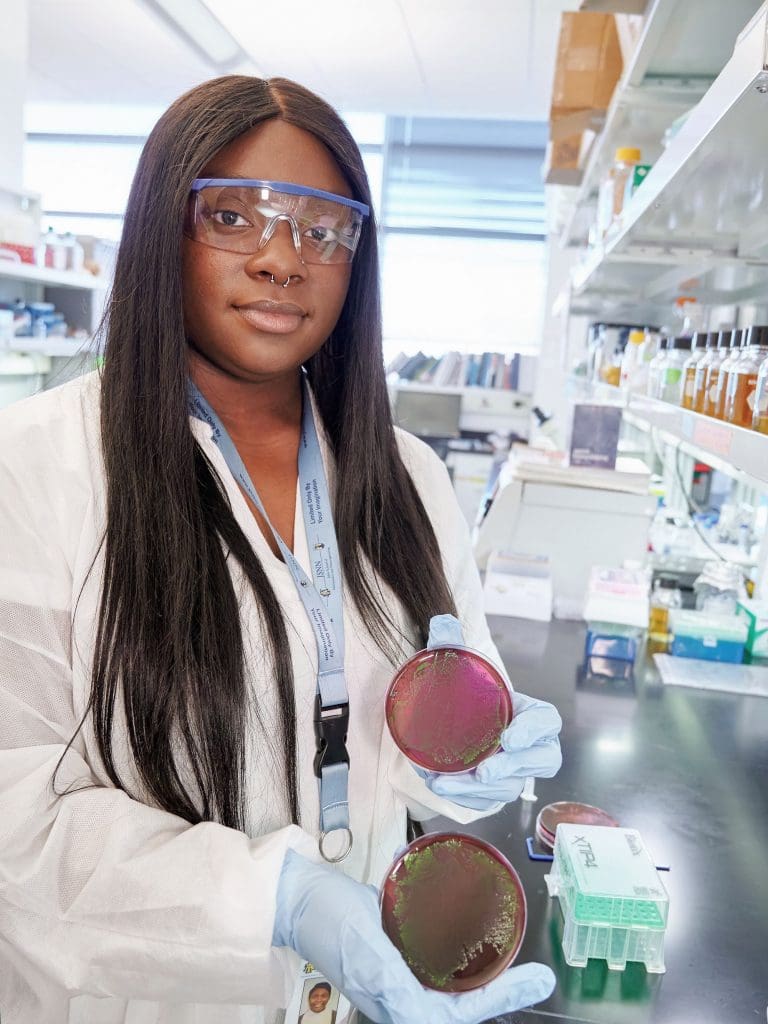
For centuries in the western world, the study of science has been dominated by a specific demographic – those with economic and cultural advantages necessary to advance in academics and research careers. Likely white, likely male.
In 2018, a National Institutes of Health study found that, over the previous seven years, only 1% of NIH grants for experienced investigators went to underrepresented minorities. The percentages for early stage and new investigator funding were only slightly higher.

Diversifying research is crucial, not only for the benefit of the young scholars entering various fields, but for the disciplines themselves, says Dr. Lee Phillips, director of UNC Greensboro’s Undergraduate Research, Scholarship, and Creativity Office.
“A diverse set of researchers can more effectively identify and address problems, particularly in a country like America where our professional workforce doesn’t reflect our diverse demographics.”
Dr. Lee Phillips
But to shake up the scientific workforce, Phillips and his colleagues say, you have to start at the beginning.
Most students enter college unprepared for research careers. They don’t know how to ask questions, conduct projects, or present their results.
What takes undergraduates to the next level? What gets them to the point where they may consider graduate school and a scientific career?
Phillips says mentorship from a faculty member is proven to help students succeed in college and then advance to graduate school. Students also thrive with exposure to the professional research world.
But a student needs economic freedom to spend time doing that. They need peers, mentors, or educational experiences to introduce the idea of conducting research – both the reasons and the processes. Much of this depends on socioeconomic circumstances. And that undeniably keeps students and universities, as well as fields of study and industry, locked within systematic racism.
Two years ago, nanoscience professor Dan Herr, Phillips, and their colleagues won NIH funding to launch a MARC U-STAR program. Through the two-year program, promising underrepresented students receive financial support, targeted mentoring, hands-on experience, and exposure to the professional world of research.
The program has opened up new possibilities for the recruitment of students of color and women, giving new structure to the pipeline.
A COMMITMENT TO CHANGE
Dr. Joseph Graves, an NC A&T State University professor at the UNCG-NC A&T Joint School of Nanoscience and Nanoengineering, is another principal investigator, or PI, on the project. He also teaches courses, such as “Genes, Race, and Society,” at UNCG.
Graves has worked with MARC U-STAR programs and similar initiatives since 1985. As the first African American to have earned a Ph.D. in evolutionary biology, he believes the most effective mentorship for minority students comes from minority scientists. Throughout his career he has made a point of seeking out these students to mentor them. Graduate and postdoctoral researchers in his lab are encouraged to provide similar mentorship to the next generation of researchers.
“It creates an atmosphere where students feel at home,” he explains. “Universities have traditionally not been accommodating to underrepresented minorities, so within these institutions we create an environment where students feel supported by people who look like them.”
Associate Professor of Chemistry Kim Petersen mentored MARC fellows when the project launched, and recently joined the PI team. Another critical student relationship, she says, is with academic enhancement coordinator Traci Miller, who tracks their progress, advises them, and plans professional development opportunities.
“We’re giving students these big experiences. Then we build in mentoring activities,” says Petersen. “This is taking undergraduate research to the next level, especially with the amazing conferences.”
The team plans to follow the careers of successive cohorts of MARC students for a minimum of 15 years, to study program impacts. Herr says the program is a long-term commitment, not just in terms of charting student progress, but in maintaining a connection and continuing to provide mentorship.
“It feels more like an extended family,” he says. “I tell the MARC students: ‘wherever we are, call me anytime.’”